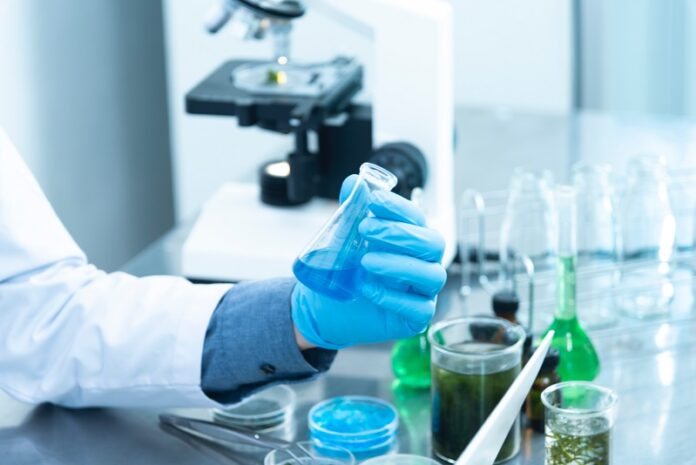Recent advances in cell-based therapies, particularly stem cell therapy, have provided new hope for treating incurable diseases. Where most conventional treatment options only aim to mitigate symptoms, stem therapy focuses on treating the underlying issues. Mesenchymal stem cells (MSCs), particularly with their self-renewing and differentiation properties, have emerged as a critical player in regenerative medicine as a cure for several diseases.
Stem cell interventions involve enhancing the body’s tendency to repair itself via stimulation, modulation, and regulation of the endogenous stem cell population to enforce tissue regeneration and homeostasis.
Currently, stem cells are widely employed in medical treatment for several diseases, including:
- Neurological disorders.
- Pulmonary dysfunction.
- Metabolic/ endocrine-related issues.
- Reproductive disorders.
- Skin burns.
- Cardiovascular conditions.
Let’s dive deeper into stem cell therapy for autism, its potential in treating neurodevelopmental diseases, and some key areas to look out for while seeking this therapy.
What are stem cells?
Stem cells are unspecialized cells within human bodies that are responsible for the development and regeneration of organ and tissue systems. Their ability to differentiate into any tissue, cell, or organ they are injected into makes them a perfect candidate for treating major diseases and injuries. There are two types of stem cells:
- Embryonic stem cells.
- Adult stem cells.
Embryonic stem cells
These stem cells can be found in early-stage embryos in the primitive stage. Embryonic stem cells are a game changer in treating several neurodevelopmental disorders like Alzheimer’s, cerebral palsy, and ASD. These cells can develop into:
- Ectodermal stem cells
- Endodermal stem cells
- Mesodermal stem cells
Adult stem cells
Also known as somatic cells, these cells can be derived from adult tissues, for instance, bone marrow. Their regeneration capacity is somehow limited, and unlike embryonic stem cells, they cannot produce brain or liver cells.
How can stem cell therapy be used for ASD?
ASD is characterized as a neurodevelopmental and autoimmune disorder, with symptoms like restricted interests and repetitive behaviors, lack of social and communication skills, and in some cases, learning disabilities.
Research has proven that autistic children have:
- Irregular immune system;
- Chronic brain inflammation;
- Active microglia;
- Increased inflammatory cytokines;
- Altered blood-brain barrier;
- Autoantibodies target the brain and central nervous system.
Stem cells for autism have demonstrated a profound healing effect in treating autoimmune disorders. Besides healing damaged tissues, stem cells can modulate the immune system by shutting off pathological responses and preserving normal immune functions. Moreover, to avoid immunological self-attack, stem cells induce the production of T-regulatory cells.
Furthermore, MSCs with their tissue regeneration functions can help regenerate damaged tissues within the parts of the brain that are affected by inflammation. They combat brain inflammations by selectively migrating to injured brain tissues and differentiating into nerve cells and neurons to replace lost cells.
Similarly, stem cell therapy and autism studies have shown that injecting bone-marrow-derived MSCs also improves neural functions like learning and other cognitive abilities in ASD patients.
According to experts’ estimates, due to the increasing prevalence of autism, the cost of stem cell therapy for autism in the US is most likely to exceed the cost of ADHD and diabetes.
What should I look out for when considering stem cell therapies?
With the rise in autism and stem cell therapy, make sure you consider the following things before opting for a stem cell treatment:
Source of stem cells
You must ask the clinicians about the source of their stem cells or the type of stem cells being used for the therapy. Stem cells sourced from different body tissues can have limited and specific capabilities. Thus, one stem cell type cannot possibly treat a multitude of unrelated diseases.
Learn about the mode of administration and dosage
It`s critical to learn about the dosage and mode of administration prior to the treatment because some studies do not report the adverse effects caused by the route of administration or dosage.
Ask for evidence-based research
Before going for the therapy, request evidence that suggests that the type of stem cells being used is suitable for the particular disease. Furthermore, ask your physician about the function of the stem cells being used and the expected results.
Consider an evidence-based clinical trial
In pursuit of autism treatment with stem cells, make sure to consider a well-designed and evidence-based clinical trial for you or your child. Some clinics undergo unproven stem cell treatments and overstate the benefits of their treatments by using irrelevant or false patient testimonials to support their treatment claims.
Consider clinics owned by licensed physicians
Avoid going for stem clinics that do not have specialized physicians and trained injection specialists. Moreover, a reputable stem cell facility uses image-guided procedures to ensure stem cells are placed precisely.
Parting thoughts
Stem cells offer a revolutionary treatment option for several terminal diseases. Their role in treating autism has shown promising results in improving ASD characteristics. Although there are still many obstacles to overcome, with more clinical trials, the capabilities of stem cells are likely to surpass our imagination.





